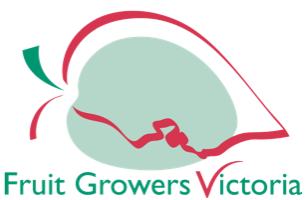

1. Based on the CBD LGA areas, our Capital Cities’ urban tree canopy is ranked as follows:
Hobart (59%), Brisbane (49%), Darwin (28%), Perth (26%), Adelaide (20%), Sydney (15%) and Melbourne (13%).
2. The annual mean air temperature of a city with 1 million people or more can be 1–3°C warmer than its surrounding areas. In the evening, the difference can be as high as 12°C.
3. Victorian research into urban forestry has found that large, healthy trees remove approximately 70 times more air pollution than small healthy trees.
4. A single 30-meter-tall mature tree can absorb as much as 22.7 kilograms of carbon dioxide in a year, which over its lifetime is approximately the same amount as would be produced by an average car being driven 41,500 kilometers (25,787 miles). The same tree could also produce 2,721 kilograms of oxygen in a year, which is enough to support at least two people. According to the University of Melbourne, because trees grow faster the older they get their capacity for photosynthesis and carbon sequestration increases as they age.
5. Extreme temperatures currently contribute to the deaths of more than 1,000 people aged over 65 each year in Australia every year, which is almost as many as Australian road fatalities.
6. Major heat waves are a particularly deadly hazard for cities because of the urban heat island effect – the phenomenon where the air and surface temperatures of cities are significantly higher than the surrounding vegetated and rural areas, particularly at night.
7. One of the best ways to reduce the urban heat island effect is by increasing the amount of vegetation in a city. Public parks, remnant woodlands, residential gardens, nature strips, street trees, green roofs, green walls, and rain gardens all assist in keeping the temperatures of a city down and improving its livability. Thermal mapping in Melbourne shows that, on average, a 10% increase in urban green cover could reduce the daytime surface temperature in cities during heat waves by around 1°C.
8. The annual cost of mental illness in Australia has been estimated at A$20 billion, which includes the cost of loss of productivity and labour force participation.
9. Most crime occurs in suburbs with lowest tree cover.
10. US research found that customers prefer shopping in well-tended streets with large trees. The study also found they would pay 9-12% more for goods sold in central business districts with high quality tree canopy, and would travel further to, visit more often, pay more for parking, and stay longer in a shopping district with plenty of trees.
********************************************************************************
1. (Jacobs, B., Mikhailovich, N., and Moy, C. (2014) Benchmarking Australia’s Urban Tree Canopy: An i-Tree Assessment, prepared for Horticulture Australia Limited by the Institute for Sustainable Futures, University of Technology Sydney.)
2. (United States Environmental Protection Agency (US EPA) (2012). Heat island effect. Viewed 6 June 2014.<http://www.epa.gov/hiri/index.htm>)
3. (Nowak, USDA Forest Service, 2002, nrs.fs.fed.us/units/urban/local-resources/downloads/Tree_Air_Qual.pdf)
4. (http://landarchs.com/8-amazing-facts-trees-didnt-know/)
5. (McMichael, Woodruff, Whetton, Hennessy, Nicholls, Hale, Woodward, Kjellstrom (2003), Human health and climate change in Oceania: a risk assessment, Commonwealth Department of Health and Ageing) – (Bureau of Infrastructure, Transport and Regional Economics (BITRE), 2014, Road deaths Australia, 2013 Statistical Summary BITRE, Canberra ACT.)
6. (Pitman, S. & Ely, M. (2012). From Green to Grey: Life Support for Human Habitats. Proceedings of 6th International Conference and Workshop on the Built Environment in Developing Countries, 4-5 December 2012, Adelaide. Adelaide: University of Adelaide.)
7. (Williams, N., Coutts, A. & Livesley, S. (2014). Our cities need more trees and water, not less, to stay liveable. Viewed 6 June 2014.)
8. (ABS, 2009)
9. (iTree results and SA gov Crime Mapper)
10. (Akbari, H. (2009). Cooling our Communities. A Guidebook on Tree Planting and Light- Colored Surfacing. Berkeley, CA: Lawrence Berkeley National Laboratory)
Receive all the latest news, product information, collections, projects, tips and special offers straight to your inbox each month or so.
Receive all the latest news, product information, collections, projects, tips and special offers straight to your inbox each month or so.
Treefinder can help you identify the perfect tree for your next project!
With over 400 tree varieties for review, the Treefinder app enables you to conveniently browse and compile a list of trees suitable for a number of common landscaping uses - from attracting birds to creating a formal screen or hedge. By selecting desired size, foliage, and a few categories, Treefinder opens up a world of possibilities.
Once you've found the perfect tree you can click through to our website for more information, availability and a quote.

We are specialists in the environmentally sustainable production of premium quality advanced landscaping trees and screens.
For more than 49 years Speciality Trees has been a leader in the production and supply of advanced environmentally sustainable, containerised landscape trees for local government, the landscaping industry and retailers.
Learn more







